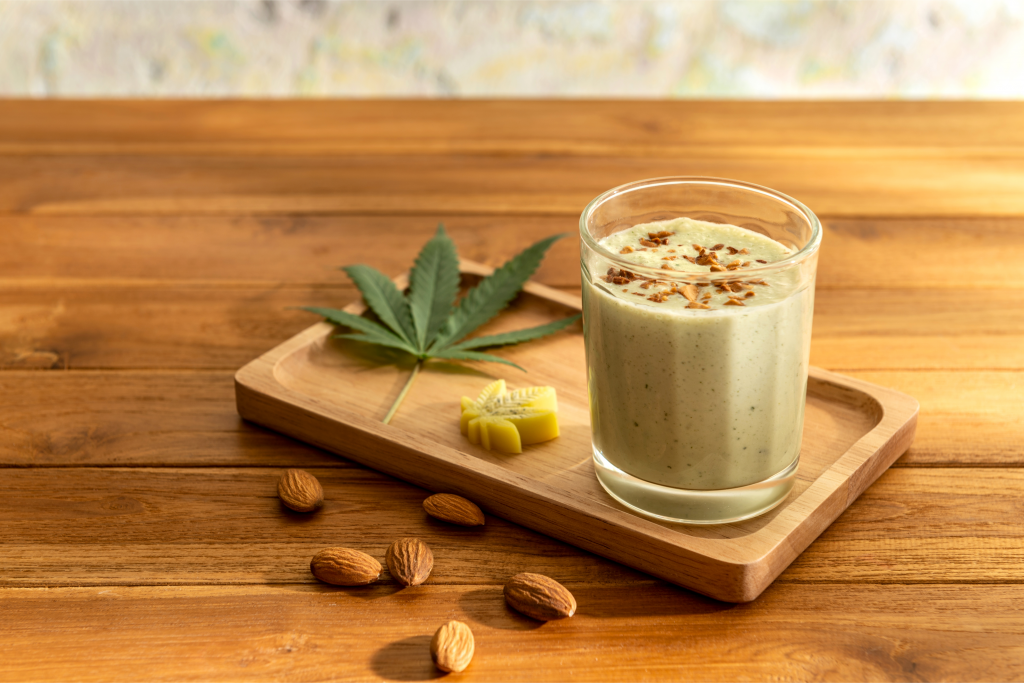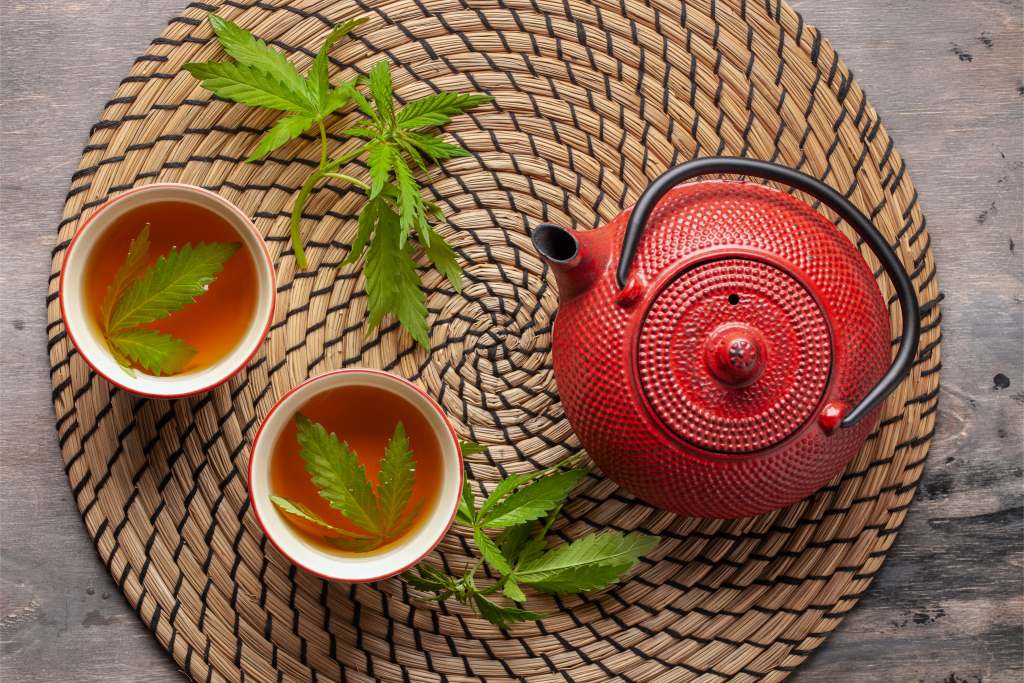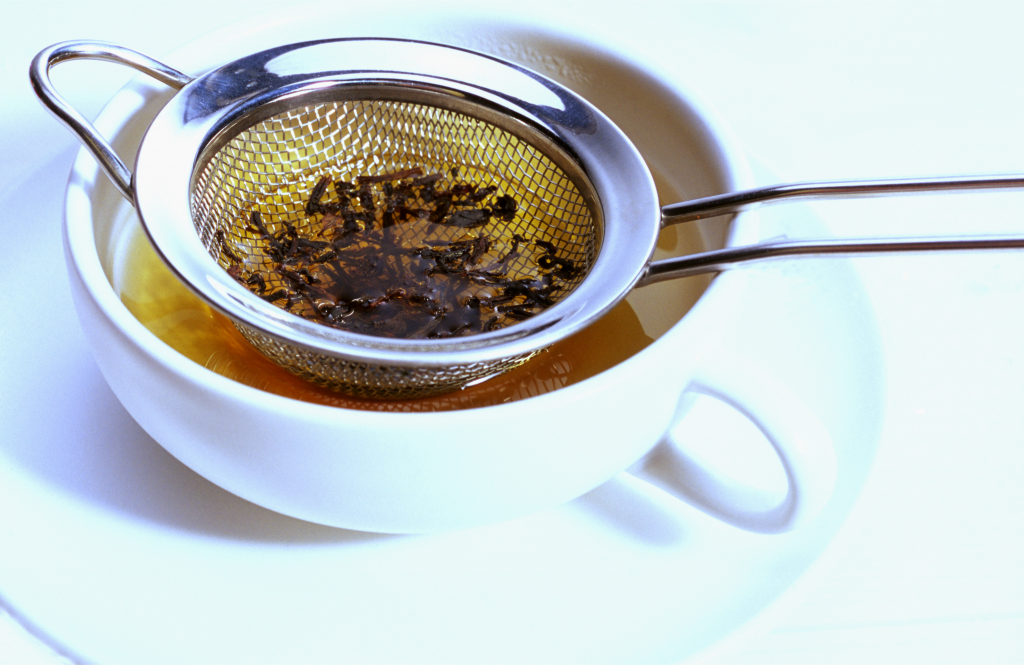Everyone wants their weed these days, with all different ways to consume the plant. Some want to smoke it, some want to eat it in edibles, some only want to vape it, some take their bong hits, some rub it on their skin, some put oil under their tongue, and some swallow down tinctures or pills. And if we really want to get down to it, some use suppositories, or nasal sprays, or skin patches as well. At one time in life, things were simpler. And one of the most basic uses of cannabis, was as a tea. Today, you can still enjoy cannabis as a nice hot cup of tea, by brewing it yourself at home.
A good old-fashioned weed tea is one of the best ways to enjoy cannabis, whether for medical or recreational purposes. Read on for a great general recipe on how to make it. We’re all about everything that goes on in the cannabis industry, and you can keep on top of the news by subscribing to the THC Weekly Newsletter. Once signed up, you’ll get first access to offers on cannabis products like vapes, edibles, and lots of other paraphernalia! We also provide deals on cannabinoid compounds like HHC-O, Delta 8, Delta 9 THC, Delta-10 THC, THCO, THCV, THCP & HHC, which are in our “Best-of” lists. Please keep in mind… *If you do not feel comfortable with these products, we don’t advise you use them, and instead advise that you only purchase and use products that you feel comfortable with.
The history of cannabis tea
Cannabis has shown up in different time periods, often used in similar ways for treating different things. There are records going back as far as 2737 B.C. in China, when Emperor Shen Neng prescribed the tea to treat gout, rheumatism, malaria, and for poor memory. Around that time, use of cannabis as a medicine spread throughout Asia and the Middle East, into Africa, and into India as well. Back then, cannabis could be used for tons of purposes, like during childbirth, ear infections, pain relief and for stress.
There are references in ancient Thai religious texts suggesting that if cannabis is steeped and consumed it can lead to spiritual enlightenment, which speaks to both use with psychological issues, as well as recreational use. Another interesting story to come out of that general region, is of Chinese surgeon Hua Tuo, who gained recognition well beyond China, and who was the first (as far as we know) medical doctor to combine cannabis tea with other things like sedatives or alcohol, for the purpose of surgery. This starting from around 208 AD.
In Ancient Greece, both cannabis tea and paste were used to treat animals and people. For example, rags were soaked in cannabis tea and then wrapped around open wounds on the legs of horses, marking one of the earliest uses of cannabis as a veterinary medicine.

India also has a tradition with cannabis tea, though its version is a little milkier, and called bhang. Bhang was used for religious and medical purposes, seen as a treatment for headaches, insomnia, sunstroke, lack of appetite, gastrointestinal disorders, and pain, including for childbirth. The spiced, milky cannabis drink is not only still drank today, but was the basis for the wording in the Single Convention on Narcotic Drugs from 1961, which keeps the drink in a legal loophole status.
In Ancient Egypt, an ancient text called the Ebers Papyrus from 1550 BC describes a preparation in which cannabis is made into a tea that’s used for medical purposes. There even seemed to be some kind of understanding of a conversion that had to happen from THCA to THC in order for different benefits to be gained. And this without having any understanding of how cannabinoids work. In Egypt, they went as far as to use cannabis tea in suppositories for the treatment of severe pain and inflammation from hemorrhoids.
When Columbus landed in South America in 1492, he brought with him hemp rope, which introduced it to the natives at the time. It became so important in America, that by 1619, the Jamestown Virginia colony had enacted a grow law to ensure that all farmers produced hemp. It was adopted directly into Western medicine in the late 1930’s by William O’Shaughnessy, who incorporated what he learned from being a part of the British East India Company, into his medical practice, even releasing the publication Bengal Dispensatory and Pharmacopoeia in 1842.
Benefits of cannabis tea
One of the main benefits of cannabis tea, is that as an edible, it goes through the digestive tract rather than being absorbed into the lungs, and this means the converting of THC to 11-hydroxy-THC which lasts significantly longer (4-6+ hours) than standard smoking (1-2 hours). It’s also thought that the water solubility of 11-hydroxy-THC allows it to pass through the blood-brain barrier more easily. Plus, as a tea, it can be slowly ingested to get dosing correct, or as a way to microdose over time.
As an edible in general, it comes with the benefit of not being smoked, and not coming with all the issues that smoking comes causes. Though this can be horribly misunderstood, it’s not about smoking tobacco in terms of smoking-related health problems, it’s the lighting of something on fire and breathing it in. We know this as smoke inhalation, and it gets tied to smoking cigarettes so frequently, as smoking cigarettes is essentially forcing a body to go through constant smoke inhalation. Drinking a tea bypasses this danger entirely.
One detraction is that, much like other edibles, cannabis tea can take time to set in, since it must make it through the digestive tract. However, as a liquid, it can sometimes start a bit sooner, with some saying the onset is as quick as 30 minutes after ingestion. This would make it one of the faster working edibles.

Brew your own cannabis tea
We know a few things about cannabis. We know it’s fat soluble and not water soluble, which is important to know when making a cannabis tea, as simply boiling the cannabis in water won’t give the cannabinoids anything to attach to, making it difficult to make a good tea. Even simply boiling it will not be enough to decarboxylate the plant if that’s the desire (though it doesn’t have to be).
The decarboxylation process converts THCA to THC, which allows for more psychoactive effects. But THCA also has plenty of health value, so whether the cannabis is decarbed or not, is your personal preference. Tea can be made by boiling the cannabis alone, by boiling the cannabis with an oil, or to make an infused tea with already made cannabis oil or tincture.
General recipe – This recipe is basic and calls for the following ingredients and preparation. It can easily be modified based on what the user is specifically going for. For example, cannabis can be decarbed first, or not. An infused oil can be added, or not. And additional ingredients like honey and lemon can vary, as well as whether those products – like honey – are also infused. It includes:
- 1 gram – ground cannabis
- 1 tablespoon – unsalted butter or coconut oil (whichever you prefer)
- 1 teabag (any kind)
- 4 cups of water
- Any ingredients desired for flavor – honey, milk, sugar, cinnamon, etc.
- Cheesecloth or a fine strainer
And the steps for use are the following:
1 – Take four cups of water and boil, and once boiling, add tablespoon of butter or coconut oil and let it melt completely, this will allow the cannabinoids to bind to something in the liquid.
2 – Once dissolved, add in ground cannabis into the boiling liquid, and then lower the temperature to a simmer.
3 – Simmer the mixture for 15 minutes. This time period can be lengthened at lower simmering temperatures, in order to preserve more compounds of the plant which can be hurt by high heat.

4 – When simmering is done, strain out the cannabis matter. You can use cheesecloth by securing it around the top of the bowl being used with a rubber-band or string. Pour the mixture through the cheesecloth so the weed matter stays on the cloth and the liquid ends up in the bowl/jar/teapot. A metal strainer can be used, but employ one with fine straining, as bigger holes will let more particles through.
5 – Add in your teabag for flavor, and any other extra ingredients like mint, lemon, or honey. Not everyone will love the taste of cannabis tea straight, so adding in flavoring might be a good idea for a more enjoyable experience. Steep for a few minutes. This method doesn’t involve a true decarb, and simmering won’t get it to high enough temperatures to fully convert THCA to THC. You can choose whether to decarb your weed first. Another option is to use a butter or oil already infused with decarbed cannabis, or to add in infused honey.
Conclusion
There are plenty of great products to be bought in life, but sometimes if you really want something done to your own specifications, it means doing it yourself. Cannabis tea is easy enough to make, and can be made by anyone looking to get just medical properties, or for a drink to make them feel really good. The best part of DIY processes? You control the outcome. Enjoy!
Welcome to the publication! You’ve arrived at CBDtesters.co, your #1 internet platform for the best all-around independent news coverage of the cannabis and psychedelics industries. Join us frequently to stay informed on the quickly-changing landscape of cannabis and psychedelics, and sign up for The THC Weekly Newsletter, to ensure you always know what’s going on.
Disclaimer: Hi, I’m a researcher and writer. I’m not a doctor, lawyer, or businessperson. All information in my articles is sourced and referenced, and all opinions stated are mine. I am not giving anyone advice, and though I am more than happy to discuss topics, should someone have a further question or concern, they should seek guidance from a relevant professional.